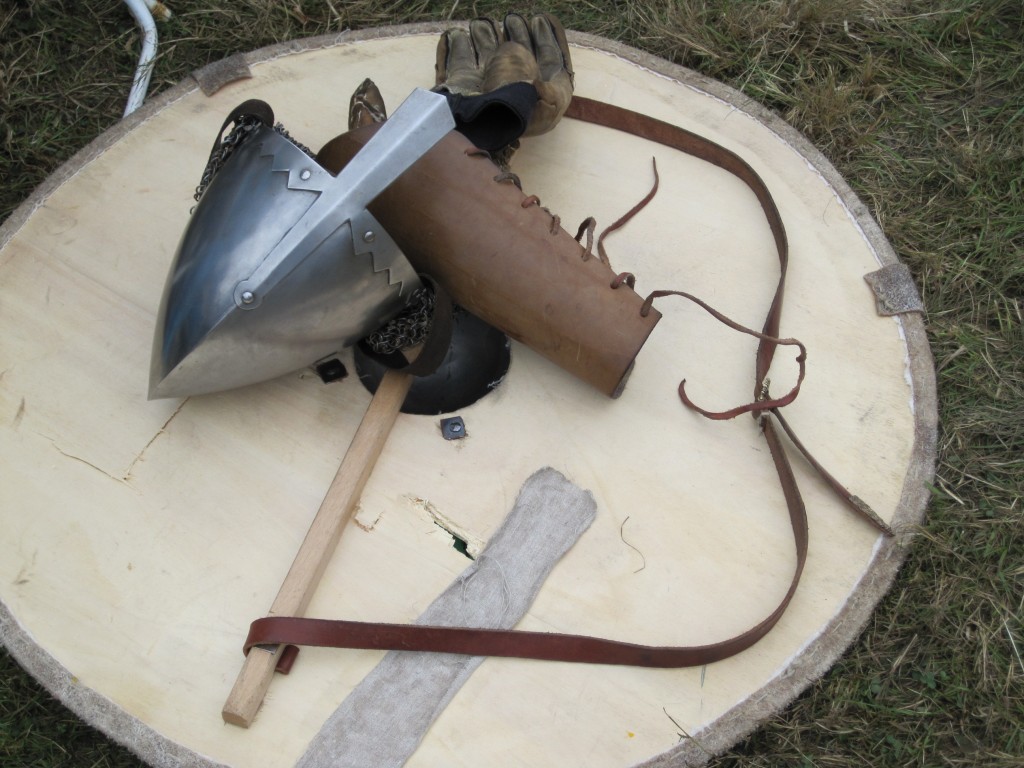 On 5 May in the year 1010, a great battle was fought between the Anglo-Saxons and the Danes at a place in East Anglia called Ringmere. In the fall of 2012, as part of the research for my novel The Price of Blood, I went with my husband to East Anglia to see for myself where that battle took place.
On 5 May in the year 1010, a great battle was fought between the Anglo-Saxons and the Danes at a place in East Anglia called Ringmere. In the fall of 2012, as part of the research for my novel The Price of Blood, I went with my husband to East Anglia to see for myself where that battle took place.
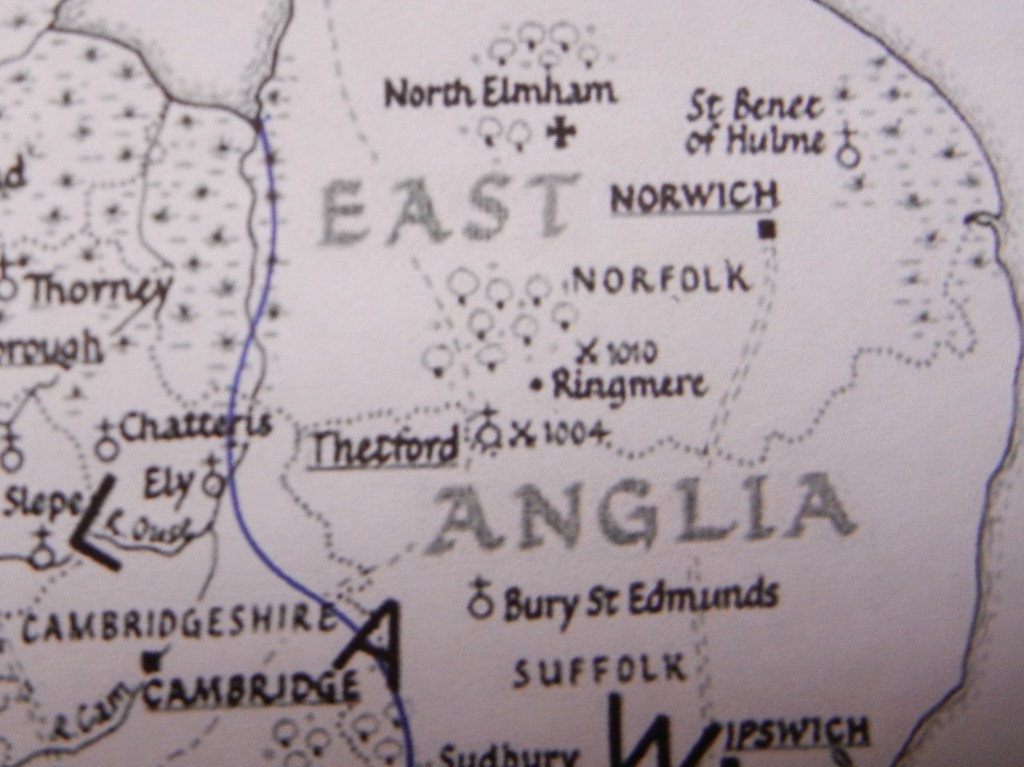 Ringmere wasn’t easy to find. Pre-Conquest battle sites may be marked on occasion, but even the people living nearby are sometimes unaware of the events that took place there a thousand years ago. (This is understandable. They live in the present. If you were to ask me about my own neighborhood – Oakland – and what it was like even 200 years ago, I could only shrug and say, “There were probably more oaks then.”)
Ringmere wasn’t easy to find. Pre-Conquest battle sites may be marked on occasion, but even the people living nearby are sometimes unaware of the events that took place there a thousand years ago. (This is understandable. They live in the present. If you were to ask me about my own neighborhood – Oakland – and what it was like even 200 years ago, I could only shrug and say, “There were probably more oaks then.”)
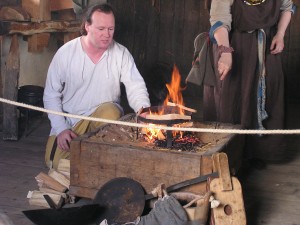 The staff at the marvelous Anglo-Saxon archaeological museum at West Stow, who knew all about the rye, reeds, wheat and heather that the Anglo-Saxons used for roof thatching, and who could explain that when building their houses they pounded square pegs into round holes because they were a tighter fit, looked at me blankly when I asked about Ringmere. By that time it was late afternoon, so we gave up on finding the battlefield for that day and went in search of our hotel in Attleborough. Ringmere would have to wait until I could pinpoint it on the internet.
The staff at the marvelous Anglo-Saxon archaeological museum at West Stow, who knew all about the rye, reeds, wheat and heather that the Anglo-Saxons used for roof thatching, and who could explain that when building their houses they pounded square pegs into round holes because they were a tighter fit, looked at me blankly when I asked about Ringmere. By that time it was late afternoon, so we gave up on finding the battlefield for that day and went in search of our hotel in Attleborough. Ringmere would have to wait until I could pinpoint it on the internet.
Overnight, a thick fog settled over East Anglia, and it was still heavy as we drove the next morning along narrow lanes toward the spot I had marked on the map as Ringmere. We parked the car on the side of the road and climbed out to have a look around.
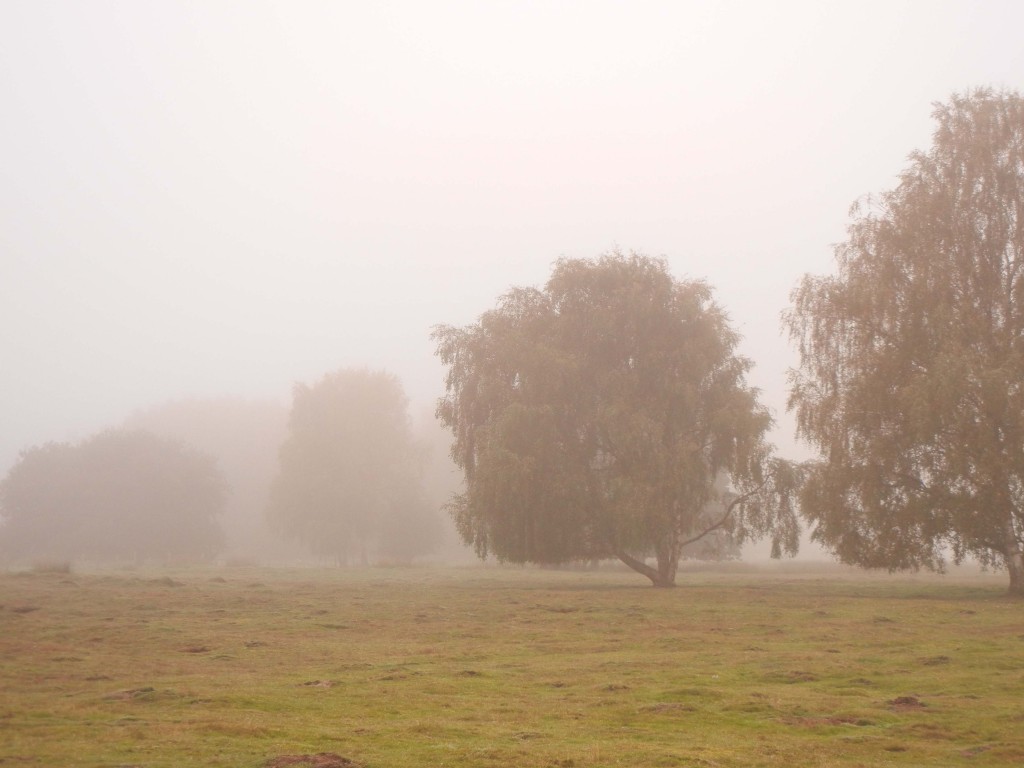 In 1010 the Anglo-Saxon army led by the king’s son-in-law, Ulfkytel, was still gathering at Ringmere when the Danes launched a surprise attack. Standing in the same place a thousand years later, my vision impaired by the sullen fog, it was easy to imagine an enemy army suddenly appearing out of the mist to the horrified surprise of the defenders.
In 1010 the Anglo-Saxon army led by the king’s son-in-law, Ulfkytel, was still gathering at Ringmere when the Danes launched a surprise attack. Standing in the same place a thousand years later, my vision impaired by the sullen fog, it was easy to imagine an enemy army suddenly appearing out of the mist to the horrified surprise of the defenders.
Stretching around me to north, south and east, flat wasteland was studded with rabbit warrens. A stand of trees stood on the western edge of the heath, and beyond that, out of sight, lay the circular lake that gave this place its name. There was no way of knowing if it looked exactly like this in 1010, but there must have been a space not unlike this, wide and flat enough to hold thousands of warriors.
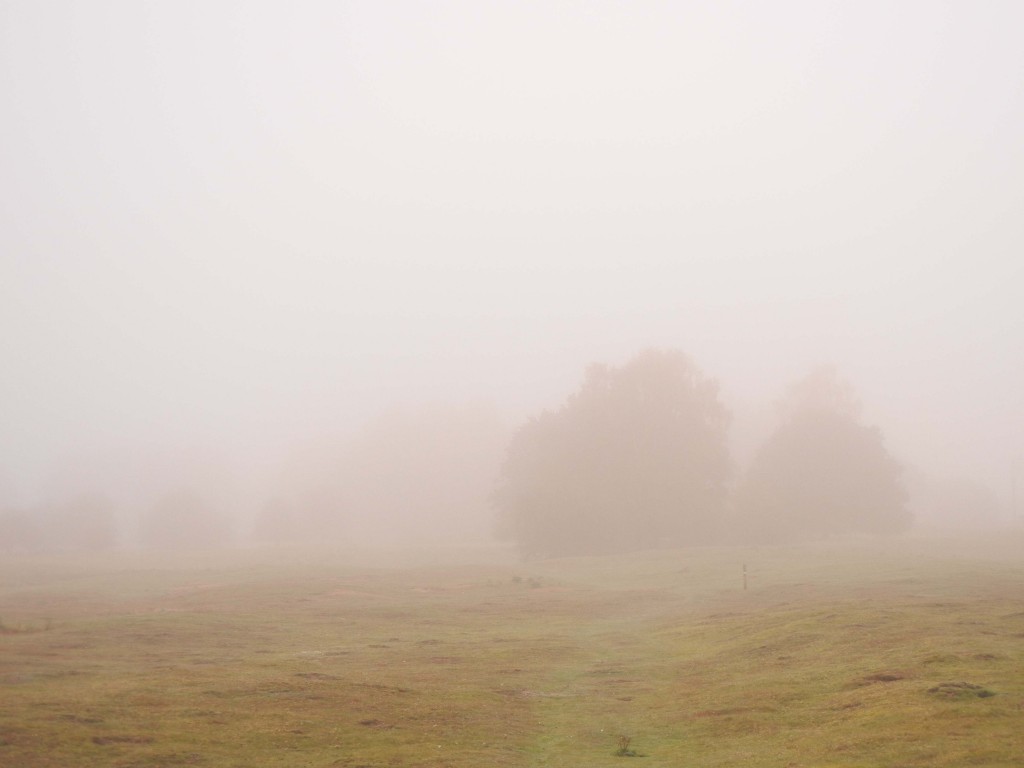 As I walked the heath I wondered if somewhere beneath my feet the detritus of battle still lay undiscovered – broken weapons, the bosses from long-rotted wooden shields, the bones of the dead. It made me sad and a little awestruck to be standing in a place marked by such a violent history. For all I knew, some of my own ancestors may have fought here and had managed to escape the carnage. They may even have been on both sides of the shield wall.
As I walked the heath I wondered if somewhere beneath my feet the detritus of battle still lay undiscovered – broken weapons, the bosses from long-rotted wooden shields, the bones of the dead. It made me sad and a little awestruck to be standing in a place marked by such a violent history. For all I knew, some of my own ancestors may have fought here and had managed to escape the carnage. They may even have been on both sides of the shield wall.
In The Price of Blood I did not describe Ringmere Heath or the battle that took place there, only scenes that came before it, from the Vikings’ point of view . . .
“Ulfkytel will not have his full force until late in May,” Cnut said with a slow smile, “which means that we can strike first, and with a much larger force.”
“Ulfkytel is someone to be feared, my lord. He led his East Anglians against the Danes once before and nearly won.”
“Nearly will not be good enough,” Cnut said, “and we will have the advantage of surprise as well as numbers.”
… and scenes that came afterwards, from the Anglo-Saxon point of view . . .
“The king cursed poor Ulfkytel for losing that battle up at Ringmere. Swore that our sister was wasted on an East Anglian who didn’t have the sense to die when he lost his battle; even threatened to take Ælfa back and give her to someone else.”
When it came to the battle itself, I let the Anglo-Saxon Chronicle speak for me:
This year came the (Viking) army, after Easter, into East Anglia…where they understood Ulfkytel was with his army. The East-Angles soon fled. Cambridgeshire stood firm against them. There was slain Oswy and his son, and Wulfric, son of Leofwin, and Edwy, brother of Efy, and many good thanes, and a multitude of people…And the Danes remained masters of the field of slaughter.
The field of slaughter. What a visceral reminder of the harsh realities of war and of the terrible events that were played out so many centuries ago on this lonely heath that the Anglo-Saxons named Ringmere.
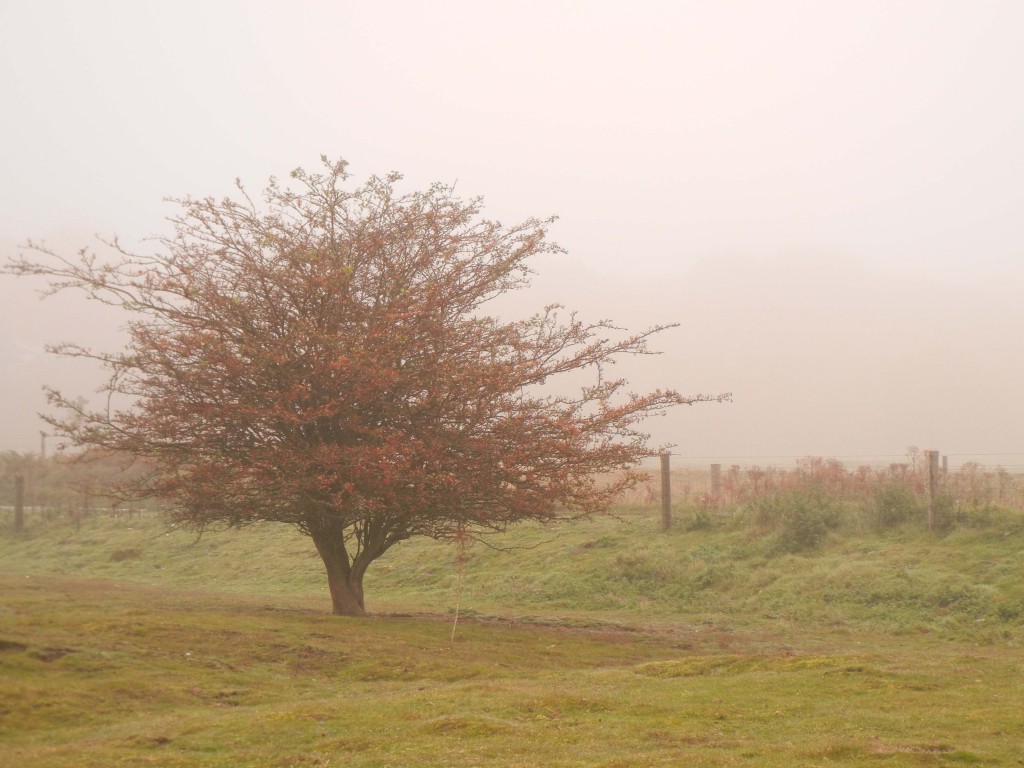
Hi Patricia, what sources have you used for this besides the Anglo-Saxon Chronicle? Many thanks, Rebecca
Hi Rebecca. Most of this post is about my visit to Ringmere, so I’m not certain what you are looking for in terms of a source. Certainly background material for the scenes I wrote in my novel about this battle include The Chronicle of John of Worcester, ‘The Death of Anglo-Saxon England’ by N.J. Higham, “Swein Forkbeard’s Invasions & the Danish Conquest of England” by Ian Howard, & “Aethelred the Unready” by Ann Williams.
Your quote from Anglo-Saxon chronicles about The Battle of Ringmere Pit is uncomplete and represents a slight to the people of Cambridgeshire. Quote “The East Anglians soon fled;Cambridgeshire stood firmly against them” The men of Grantanbrycg (Cambridge)died to a man. Ulfcytel departed the battlefield to appear again at Ashingdon against Cnut, this time Ulfcytel pony was not swift enough and he perished.
You are correct. I left out the sentence that Cambridgeshire stood firm. It was not my intent to slight the men of Cambridge. I don’t remember now why I left it out. I have fixed it.